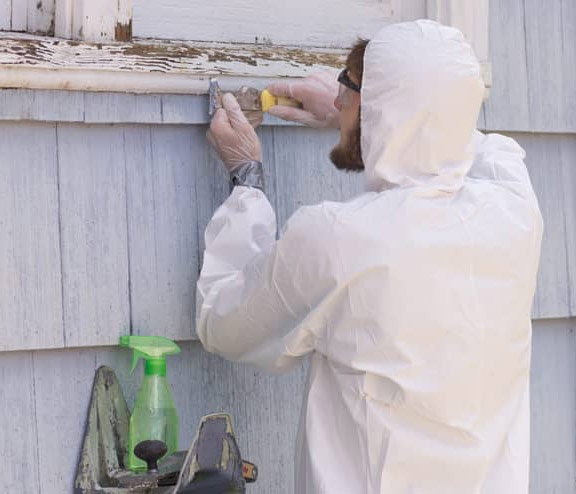Essential Tools and Approaches for Reliable Lead Offense Cleaning
Attending to lead infractions efficiently necessitates a comprehensive approach that mixes the right devices with calculated approaches. The very first step entails furnishing workers with Personal Safety Devices (PPE) to protect their health. Simultaneously, making use of specialized cleanup devices, such as HEPA vacuums and lead-specific cleaner, is necessary for complete pollutant elimination. Efficient containment approaches, including plastic sheeting and unfavorable atmospheric pressure systems, are necessary to protect against the spread of dangerous products. Risk-free disposal practices and stringent adherence to regulatory standards ensure accountable handling of toxic waste. What are the nuanced methods that truly make a distinction?
Personal Protective Devices
Individual safety tools (PPE) is a crucial element in the efficient monitoring of lead contamination cleaning. PPE offers as a vital barrier, protecting workers from the harmful results of lead direct exposure, which can cause extreme wellness effects. The essential PPE for lead cleanup includes respirators, protective clothing, gloves, and eye protection. Each sort of equipment is specifically designed to mitigate different risks connected with lead fragments and dirt.
Respirators, especially those equipped with HEPA filters, are crucial for filtering system airborne lead bits, preventing inhalation. Safety clothes, consisting of coveralls and disposable matches, avoids lead dirt from adhering to employees' garments, decreasing the threat of additional contamination.
In addition, strenuous training on the appropriate usage and upkeep of PPE is crucial. Workers have to be informed on wearing and doffing procedures to stay clear of contamination. Regular assessments and replacements of PPE elements are essential to preserve their safety capabilities, making sure a secure and compliant cleaning operation.
Specialized Cleanup Devices

An additional important device is the wet/dry vacuum cleaner, which can effectively clean up both dirt and fluid contaminants. These vacuums usually come with HEPA filters to offer an added layer of safety and security. Wet wipes or tack fabrics are additionally crucial for surface cleaning; they are particularly made to capture and hold lead bits, minimizing the threat of spreading out contamination.
For more stubborn deposits, specialized lead-removal cleaner are needed. These agents are developed to damage down lead bits, making them less complicated to get rid of. Scrub brushes with tough bristles can aid in this process, especially on rough surfaces where lead dust tends to adhere more strongly.
Additionally, encapsulants are used to seal discover here lead-contaminated surface areas, stopping the launch of lead dirt. These specialized paints and finishes are made to stick to different substratums, giving a long-lasting service for lead containment.
Effective Containment Methods
Reliable containment approaches are critical in alleviating the spread of lead contamination during cleaning activities. Implementing durable containment approaches makes sure that lead particles do not move to unaffected locations, thus shielding both workers and the environment (DOH & HPD Lead Violation Removal NYC).

To her explanation enhance control, encapsulants can be put on surface areas that are not being eliminated or disturbed. These specialized finishes bind lead dust, lowering its accessibility for resuspension. In addition, all workers have to use ideal Personal Safety Equipment Read Full Report (PPE), consisting of respirators and disposable fits, to stop contamination spread.
Safe Disposal Practices
Guaranteeing risk-free disposal techniques is a critical element in the administration of lead contamination cleaning. Correct disposal mitigates the threat of lead coming back the atmosphere and jeopardizing public health and wellness (DOH & HPD Lead Violation Removal NYC).
Transporting lead waste needs adherence to strict standards. Making use of licensed contaminated materials carriers makes certain that the products are handled responsibly. Documentation, including manifests detailing the type and quantity of waste, should accompany shipments to track the waste from the website of beginning to its last disposal location.
Designated contaminated materials disposal centers are furnished to manage lead-contaminated products safely. These facilities typically utilize advanced methods such as stabilization, solidification, or chemical therapy to counteract the lead prior to disposal. Landfilling in specialized, lined areas that avoid leachate from contaminating groundwater is a common technique for last disposal.
Routine training for workers associated with lead garbage disposal is critical to keep security standards and prevent unintended direct exposure. By adhering to these techniques, companies can considerably reduce the ecological and health and wellness impacts related to lead contamination.
Regulatory Conformity Tips

Adhering to governing compliance is paramount in the effective execution of lead contamination cleaning. Understanding and adhering to federal, state, and neighborhood policies ensures not just the safety and health and wellness of individuals however additionally the legal and economic well-being of the cleaning organization. The Environmental Defense Agency (EPA) establishes stringent requirements, such as the Lead Renovation, Repair Service, and Paint (RRP) Guideline, which mandates correct certification and training for specialists handling lead-based activities.
Compliance begins with a complete assessment of appropriate legislations and guidelines. Organizations has to remain updated on any legislative modifications, which can be assisted in via normal training sessions and registering for industry updates. Documentation is another vital compliance facet; keeping detailed documents of all tasks, consisting of inspection reports, employee training logs, and disposal manifests, is essential.
Furthermore, engaging with certified lead inspectors or risk assessors ensures that lead dangers are properly recognized and minimized. Companies have to enforce using Individual Safety Equipment (PPE) and guarantee that safety protocols are strictly adhered to. Clear communication with stakeholders, consisting of staff members, clients, and regulatory bodies, will certainly promote a society of conformity and accountability, inevitably adding to a safer and extra effective lead cleanup procedure.
Final Thought
Efficient lead violation cleaning necessitates the assimilation of specialized tools and strategic techniques to make sure safety and effectiveness. Utilizing HEPA vacuum cleaners, specialized cleaning representatives, and effective control methods such as plastic bed linen and negative air stress systems is vital. Personal protective tools (PPE) safeguards workers from direct exposure, while safe disposal methods and rigorous adherence to regulative conformity are important for sensibly managing harmful waste. Jointly, these steps dramatically reduce health and wellness risks and contribute to a cleaner atmosphere.